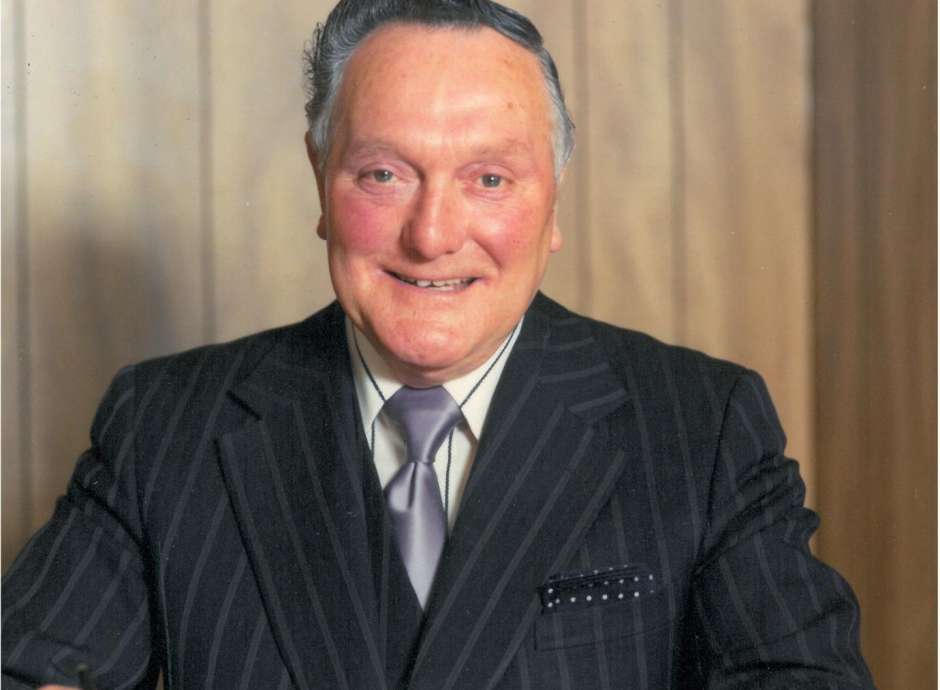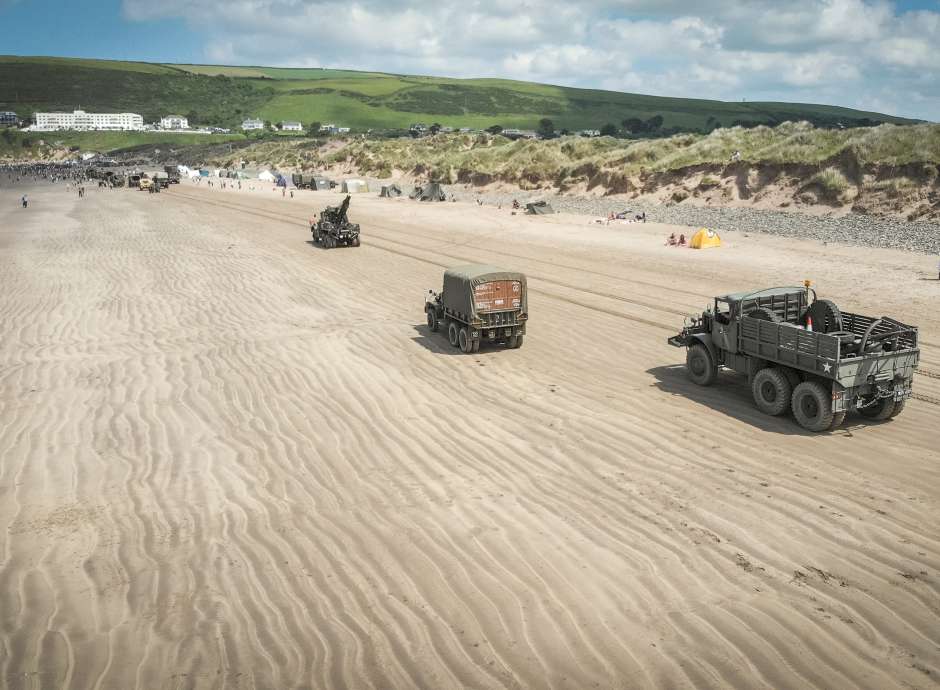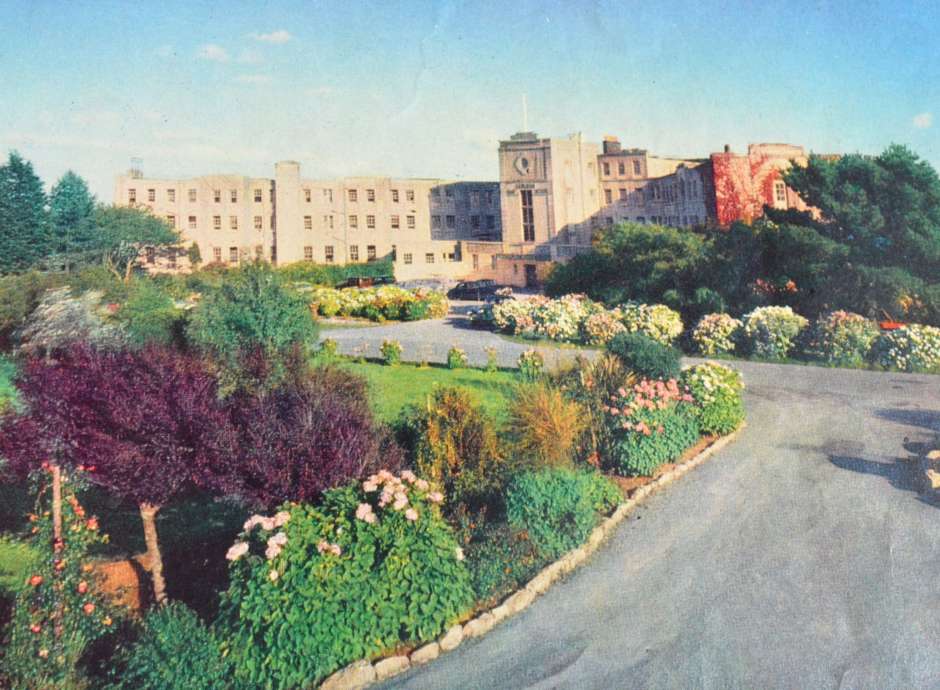
Honouring Percy Brend's
Legacy
As we commemorate the 80th anniversary of VE Day, marking the end of World War II in Europe, we reflect on the lasting influence of those who served, including Percy Brend. Called up to the Royal Navy when the war broke out, Percy’s experiences shaped not only his life but also the creation of the Brend Collection. His dedication, values, and resilience are woven into the brand, leaving a legacy that continues to inspire the collection today.
While Percy Brend played a role during the war, many of our hotels also have their own unique stories to tell.

Saunton Sands Hotel's Role
During WWII
During World War II, the Saunton Sands Hotel played a significant role in Britain's wartime efforts. In 1940, the hotel was requisitioned to accommodate the evacuated pupils of the Duke of York’s Military School, an all-boys boarding school that was relocated from Kent to Devon for safety. The hotel remained their refuge until 1946.
Beyond serving as a temporary school, the hotel's strategic location made it a notable landmark for German bombers en route to Cardiff. To counter this, it was painted green in an attempt to obscure it from aerial view. However, the hotel's contribution to the war effort paled in comparison to the importance of the surrounding beach. Saunton Sands and other North Devon beaches became crucial training grounds for Allied troops preparing for the D-Day landings. Brigadier General Paul W. Thompson, who led the training exercises, famously remarked, “If Waterloo was won on the playing fields of Eton, surely the sands of North Devon beaches contributed importantly to the success of the assault over the Normandy beaches.”

Carlyon Bay Hotel’s Role
During WWII
During World War II, the Carlyon Bay Hotel played an important role in supporting the war effort by providing refuge to evacuees. Two boys' schools from Canterbury, The King's School and St Edmund's, were relocated to the hotel to escape the dangers of the Blitz. The hotel served as a safe haven for the students, offering them a temporary home away from the chaos of the war.
In March 1944, the Carlyon Bay Hotel gained further prominence when General Bernard Montgomery, one of the leading figures of the Allied forces, visited the hotel to inspect the schools' cadet force. This visit highlighted the hotel's significance not only as a shelter for evacuees but also as a hub for military training and preparation during the war.

Royal Duchy Hotel's Role
During WWII
The Royal Duchy Hotel, once known as the Pennish Hotel during World War II, has a rich history tied to the war effort. During the conflict, the hotel became a key site for American soldiers who were stationed there. Anti-aircraft guns were installed on the grounds to protect against potential attacks, with their presence marking the hotel as a strategic point in the area. Today, visitors to the hotel can still see the remnants of this military past, including the base of the anti-aircraft guns located near the sun terrace.

Victoria Hotel's Role
During WWII
During World War II, the Victoria Hotel in Sidmouth played a vital role on the home front, serving as a hospital for injured aircrew. The grand seaside hotel was transformed into a place of care and recovery for those wounded in service, offering a safe haven away from the front lines. Its elegant interiors were repurposed into wards and treatment rooms, echoing the resilience of the era. Today, visitors can still find traces of its wartime past, most notably in Bertie’s Bar, where the faint marks of tape used to board up the windows during air raids remain visible, a quiet but powerful reminder of the hotel’s historic contribution during one of the country’s darkest times.
1939 - 1945: World War II Timeline
1939
September 1, 1939: Germany invades Poland, marking the start of World War II.
September 3, 1939: Britain and France declare war on Germany in response to the invasion of Poland.
1940
May 10, 1940: Winston Churchill becomes Prime Minister of the United Kingdom.
May 26 – June 4, 1940: The Dunkirk evacuation (Operation Dynamo) takes place, where over 330,000 British and Allied troops are rescued from France.
July – October 1940: The Battle of Britain occurs, where the Royal Air Force successfully defends Britain from German aerial attacks.
1941
June 22, 1941: Germany invades the Soviet Union in Operation Barbarossa.
December 7, 1941: Japan attacks Pearl Harbor, leading the United States to enter World War II.
1942
June 4-7, 1942: The Battle of Midway, a decisive naval battle that shifts the balance of power in the Pacific in favour of the Allies.
August 1942 – February 1943: The Battle of Stalingrad takes place, marking a turning point in the war on the Eastern Front.
1943
July 10, 1943: The Allied invasion of Sicily begins, followed by the Italian Campaign.
November 28 – December 1, 1943: The Tehran Conference, where Allied leaders (Churchill, Roosevelt, and Stalin) meet to plan the final defeat of Germany.
1944
June 6, 1944: D-Day, the Allied invasion of Normandy (Operation Overlord), begins, leading to the liberation of Western Europe.
July 20, 1944: A failed assassination attempt against Adolf Hitler (the July 20 Plot) by German resistance members.
1945
January 27, 1945: Soviet troops liberate the Auschwitz concentration camp.
April 30, 1945: Adolf Hitler commits suicide in his bunker in Berlin.
May 7, 1945: Nazi Germany officially surrenders to the Allies, ending the war in Europe.
May 8, 1945: VE Day – Victory in Europe is celebrated as the surrender of Nazi Germany is announced. The war in Europe officially ends.
May 9, 1945: The Soviet Union celebrates VE Day a day later.
After VE Day
July 17 – August 2, 1945: The Potsdam Conference, where Allied leaders discuss post-war Europe and set terms for Japan's surrender.
August 6 and 9, 1945: The United States drops atomic bombs on Hiroshima and Nagasaki, leading to Japan’s eventual surrender.
September 2, 1945: Japan formally surrenders, marking the official end of World War II.
Thanking Those Who Served in WWII
We are deeply grateful to all those who served during World War II, as their courage, sacrifice, and unwavering commitment shaped the world we live in today. From the brave soldiers on the front lines to the countless individuals working tirelessly on the home front, the sacrifices they made for future generations will never be forgotten.
We honour and thank them for their extraordinary contributions, which continue to inspire and remind us of the strength of the human spirit.



